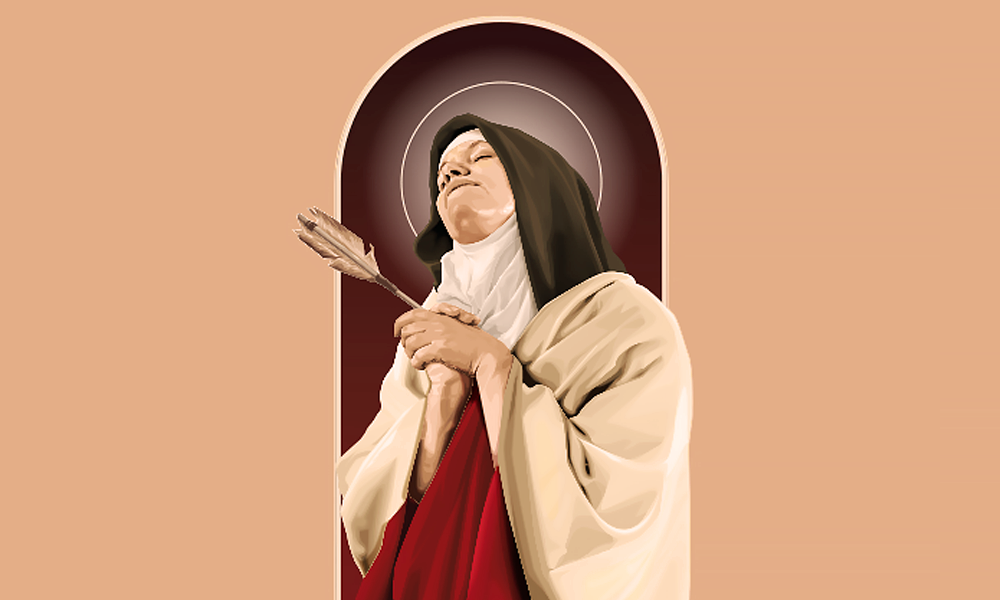
St. Teresa of Ávila
1515-82 | Feast: Oct. 15
1515-82 | Feast: Oct. 15
Born just two years before Martin Luther nailed his 95 Theses to a church door, Teresa was ultimately guided by her literal burning love for God, and she paved her own way toward reformation within the Catholic Church.
Teresa Sánchez de Cepeda Dávila y Ahumada came from a family of Jews who converted to Catholicism. She experienced zeal for her faith all throughout childhood, and began a deep devotion to the Blessed Virgin when her mother died at the age of 11. At the age of 20, in 1534, she followed the surest path to holiness for herself and entered religious life.
What was a sure path was hard work, however, since Teresa battled illness over the course of her life. She read spiritual works extensively, practiced physical mortification, and experienced ecstasies which her spiritual directors guided her through to ensure they were not of a demonic nature, especially since the Spanish Inquisition was suspect of such experiences. Perhaps her most well-known ecstatic experience is of an angel’s arrow piercing her heart with the love of God, as depicted by Bernini’s “Ecstasy of Saint Teresa.”
As time went on, however, Teresa became dissatisfied with the lax nature of her Carmelite convent and began to lead reformation efforts within the order to bring back purity and to maintain focus on the simple life devoted to prayer. Despite significant opposition, Teresa worked alongside St. John of the Cross to continue her reform efforts; eventually the reforms grew in popularity and spread until a new order was formed in 1562: the Discalced (“shoeless”) Carmelites. Over the course of her life she founded more than 15 convents.
St. Teresa was canonized in 1622. In recognition of her unique spirituality focusing on the interior prayer life, she was declared a Doctor of the Church by Pope Paul VI in 1970. Two of her best-known works are “The Interior Castle” and “The Way of Perfection,” both of which are foundational in Christian mysticism and contemplative prayer.



